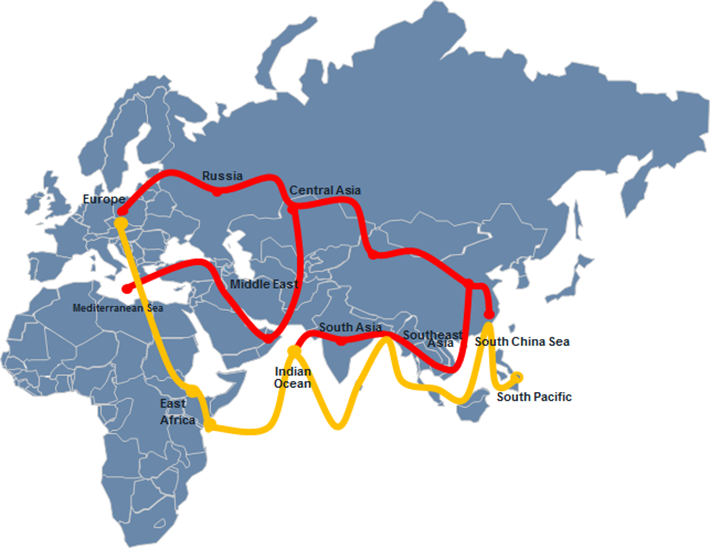What’s missing from this picture of the broad outline of China’s Belt and Road Initiative (BRI)?
A significant part of the world whose leadership believe trade is mostly a one-sided deal and in which in any agreement there are ‘winners’ and ‘losers’. This view, that would shame even the smallest of small town medieval European burghers, is not shared by China.
The paper highlighted this week is an ambitious attempt to quantify the benefits of the Belt and Road Initiative. You can argue with the methodology and the magnitude of the findings but the broad conclusion, that greater trade benefits all involved is both intuitively and convincingly argued.
In the paper, Karen Jackson and Oleksandr Shepotylo from the universities of Westminster and Bradford in the U.K. respectively, investigate a number of scenarios. The benefits of the BRI alone, the benefit instead of both deep and shallow free trade agreements with BRI connected countries and the benefit of the BRI plus new trade agreements; and? There is no scenario in which the world is worse off.
Sub-Saharan Africa and South Asia may be only marginal beneficiaries (a look back at the map above makes the why of this obvious) but particularly the poorer countries involved in the plan, like Ethiopia and Laos, would be significant beneficiaries.
The researchers also highlight that in their models China usually comes out as the biggest net beneficiary and this realization could provoke chauvinistic opposition (it already is); particularly in rich European countries who may be prevented today by reciprocating with inward investment into China.
According to the paper the base case, a 30% reduction in transport costs between China and the EU, would result in a welfare increase for the average consumer in China of 1.51% and for their European counterpart 0.97%. Those gains may seem small, but multiply the first number by 1.4 billion and the second by 740 million and it’s much easier to understand the cost-benefit proposition of the plan.
As for the 320 million whose leaders think ever closer trading links are to be treated with a high degree of skepticism? As the map at the top shows they, in time, are likely to become a much smaller term in a re-written global trade equation.
You can access the paper in full via the following link ‘Belt and Road’: The ‘China Dream’?
Happy Sunday.
